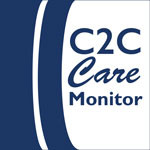Float mounting digital inkjet prints
- This topic has 10 replies, 5 voices, and was last updated 6 years, 9 months ago by
 Susan-1.
Susan-1.
-
AuthorPosts
-
-
January 4, 2017 at 2:11 pm #135356
 Elizabeth McDermottParticipant
Elizabeth McDermottParticipantHello,
I’m a conservation tech at the PAFA. Our museum recently acquired a series of digital inkjet prints. The paper support is called “Premium Luster Photo Paper” by Epson. I believe this particular paper is encapsulated in polyethylene. The inks are a resin-coated pigment ink (black and white) called “UltraChrome K3.”
The curator wishes to have me float mount the prints but I am at a loss as to what type of adhesive to use for hinging considering inkjet’s notorious sensitivity to water. Furthermore, I’m not quite sure WSP will even adhere to polyethylene. The artist usually dry mounts her prints to Sintra (a PVC product), but we obviously do not wish to use that method for mounting her work. We don’t have a paper conservator on staff to assist me with the framing, so I was hoping that someone in the C2CC community has experience with mounting contemporary digital inkjet prints with their preservation in mind.
Thanks much,
Liz -
January 4, 2017 at 2:35 pm #135357
 Rachel LapkinParticipant
Rachel LapkinParticipantHi Liz,
Have you considered using magnets? I recently started reading about using them here: http://spicerart.com/magnets/
Since the photo paper is relatively light weight (as opposed to textiles) it might be easy to work out what materials to use and what magnets would be effective, especially if you were in touch with someone who has used them before. Check out this great use of magnets here: http://blog.hrc.utexas.edu/2016/04/27/mounting-andy-warhols-polaroids/
Let us know what you decide to do! I’d be interested in hearing about your solution!
-Rachel -
January 4, 2017 at 3:12 pm #135358
 Louise Stewart BeckParticipant
Louise Stewart BeckParticipantHi Liz,
Magnets sound like a really interesting path, Rachel has provided some great resources. I’ve also reached out to some photograph conservators to ask their advice. I’ll keep you posted!
-
January 4, 2017 at 4:44 pm #135359
 Elizabeth McDermottParticipant
Elizabeth McDermottParticipantThanks, Rachel and Louise. These are some fantastic resources!
I did consider using magnets, however I don’t have that much experience with them, so I’m reluctant to dive right in. One concern that I have is that there are no margins on the prints where I can confidently place a magnet. I’m afraid of scratching or abrading the surface with a magnet, as they would need to be placed over the image area.
Are you aware of any safeguarding materials that can be placed on the underside of the magnet to avoid abrasion of the image area?
I am definitely going to peruse these articles! Thank you so much for passing them along 🙂 -
January 5, 2017 at 10:42 am #135363
 Rachel LapkinParticipant
Rachel LapkinParticipantHi Liz! Again- I’m sorry I’m an incomplete resource about this, as I have yet to put magnet mounts into practice. I have read about using Japanese tissue or even polyester/ethylene pieces to mitigate the contact between magnet and item- these materials should not interfere with the strength and hold of the magnet.
And I do encourage you to contact someone who has worked with magnet mounts! I find our conservation colleagues eager to help with innovations like this.
-Rachel
-
January 5, 2017 at 1:22 pm #135371
 Susan-1Member
Susan-1MemberLiz,
Why don’t you contact Gwen Spicer directly? Her email is on her website. She may have an idea of a workaround for you. Let us know what she suggests.
Susan
-
January 5, 2017 at 3:59 pm #135374
 Kim R. Du BoiseParticipant
Kim R. Du BoiseParticipantHi Liz,
We are familiar with the mounted photos on Sintra, and those can have their own issues. We are glad to hear the chosen mounting. The Epson paper is an “Instant dry” paper that has a swellable receiving layer for the inks. This paper is considered as RC paper (Resin coated) so the back of the print is likely to have a coating that will be difficult to use the standard procedures as you suspect. This paper is really made for the dye-based inks, but will take the pigmented inks like the UltraChrome K3.
The pigment inks were first made for the papers that are considered Fiber base (back feels like paper, not coated). They take longer to dry, but hold the heavier pigment loads from the different densities of inks. You are correct to be concerned with abrading the surface of this paper. It is a possibility. Since the inks are absorbed into the surface, any abrasion will show a different gloss at some angles of light.
What we would suggest in this case are products that are similar to linen tape & tissue, but have an adhesive that is acid-free and reversible. These are sold by different conservation suppliers and you can look for “document repair tape” or “document repair tissue”. These come in varying width, with one about 3/4″ wide. Also you can use some of the Filmoplast tapes that are also reversible, but can be used like linen tape. Not knowing the size and weight of the pieces, it is difficult to give a specific item.
The RC paper like the Ultra Premium Lustre has a polyethylene back coating that will hold up to some wetness of adhesive removal if/when you wish to remove the mounting. The paper is a 10 mil paper, so it may not be as thick as some fiber base supports. Something to watch for is how it is handled; it could get slight creases in it.
If you need more info or want to ask about a specific product, you are welcome to contact us directly. However, it will be good to post the outcome here so others can benefit from it. Good luck with the process!
~Kim
-
January 9, 2017 at 10:16 am #135379
 Elizabeth McDermottParticipant
Elizabeth McDermottParticipantThank you for the input, everyone! This has been really helpful.
Susan, I will reach out to Gwen Spicer. Thanks!
Kim, your input has been enormously helpful. The works are gigantic–30 x 40 and I certainly did suspect that the paper can crease very easily–it feels very flimsy, so I’ve been putting off handling it, even for temporary re-housing. I think using filmoplast tape or another pre-manufactured PS tape will not be substantial enough given the size (unless I go with Tyvek tape).
Since they are so large, I am thinking of creating my own hinges using Aquazol 500 35% film and japanese paper. I found this study performed by the Rijksmuseum to be helpful: http://www.slideshare.net/rpiantav/recent-findings-evaluation-of-adhesive-systems-to-hingemount-resin-coated-papers-for-photographs-and-digital-prints
Please let me know your thoughts! I have to frame these in the spring, so there is more time to explore options.
Thanks so much!
Liz -
January 9, 2017 at 6:57 pm #135384
 Kim R. Du BoiseParticipant
Kim R. Du BoiseParticipantHi Liz,
Those are very large, so I see the complications even more. The Aquazol has been used for a while, so the stability & non-reactive qualities are established by studies and testing. That will be one way to use strong, long-fibered japanese papers to create your hinging. There will be several along the edges to keep an even stress along the print.
As to handling these large pieces, as a printmaker or large silver photo printer, I can tell you that it is possible to move even damp papers without damage to a table or tray of water. It takes a bit of practice to do this by hand. I would recommend using a support of Foamcore board, or you may have some E-flute or B-flute box board handy. Any lightweight sturdy board will work to move these from or into housings.
You may also wish to have a piece of this board stored with the prints for use when accessing them for any purpose. I would recommend sliding the print, verso down, onto a board slightly larger on all sides than the print. This way, you can hold the print onto the support while moving it to a work table or housing. I would also suggest a very smooth paper, such as interleaving, to use as a cover for the front of the print as you work on them from behind. This will mitigate possible abrasion to the surface of the print.
I hope this helps you. If you feel like you need more info, you can contact me directly at labs@photoartsimaging.com.
~ Kim
-
July 17, 2017 at 1:32 pm #136672
 Elizabeth McDermottParticipant
Elizabeth McDermottParticipantHi Everyone,
I just wanted to follow up with what I did for this print. I wound up using magnets!
Firstly, I used Tycore as a backing board cut to the size of the artwork. I hinged 1” x ½” spacers which were wrapped in toned black paper to the Tycore with gummed linen tape (perhaps there is a more appropriate tape to use). For the top spacer, since I needed to make them out of two square acrylic rods taped together to cover the 1” margins on the photo, I taped three separate pieces along the inner most edge leaving gaps where I wanted to put the magnets. In hindsight, I should have reinforced the inside edge with a strip of mat board so that the paper that wrapped around the spacer was a bit more rigid. You could also potentially leave gaps in the spacers for the side and bottom pieces if you wanted more support as well. This sounds like a huge photograph and so it’s probably a good idea.
Wherever I planned to put magnets, I embedded a steel plate into the Tycore by removing the paper down to the honeycomb panel. Then after gluing down the steel mending plate using hotmelt adhesive, I covered it with a thick kozo paper adhered using Lascaux 498 to prevent the steel plate from abrading the back of the RC paper. Once everything was in place, I transferred the art onto the Tycore and secured the magnets in place with a piece of mylar between the magnet and the art to protect from abrasion. Then I folded up the spacers in the appropriate order, put the glazing in place, and taped the edges.
I am planning on storing the piece with its spacers by constructing a wrapper lid in some fashion, which I have yet to figure out!
Another mistake that I made was not allowing for a bit more overlap with the spacers onto the recto of the print which caused a bit of the margin to show. I should have either made the spacers a bit wider than 1,” or made the backing board smaller.
Thanks everyone for your input!
Liz
Attachments:
You must be logged in to view attached files. -
July 18, 2017 at 6:35 pm #136679
 Susan-1Member
Susan-1MemberVery nice, Liz! Congratulations and thanks for posting this!
Susan
-
-
AuthorPosts
- The forum ‘Connecting to Collections Care Forum Archives – 2015 through 2018’ is closed to new topics and replies.




